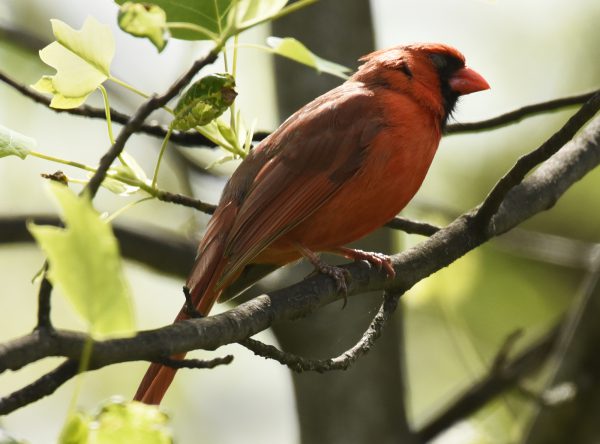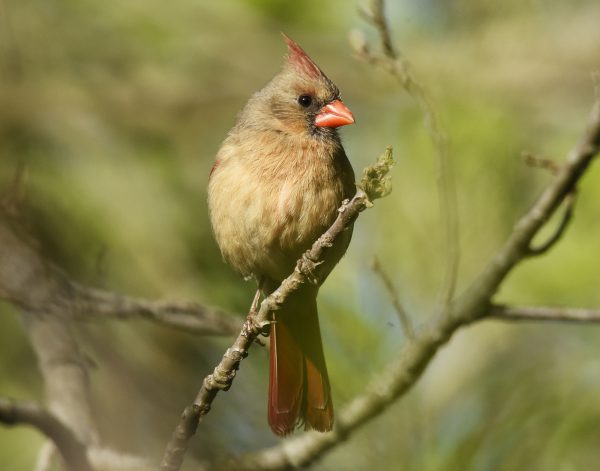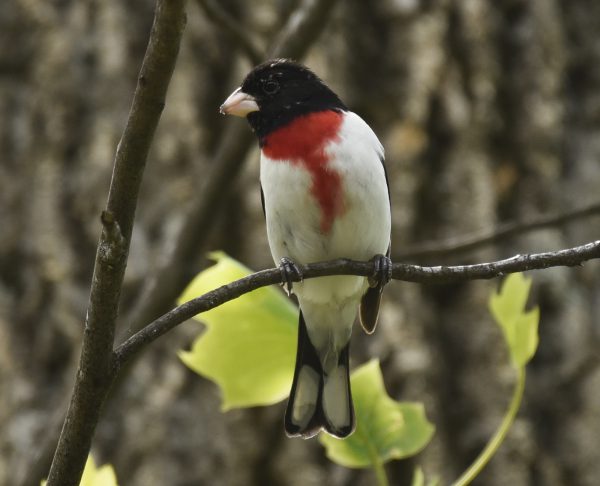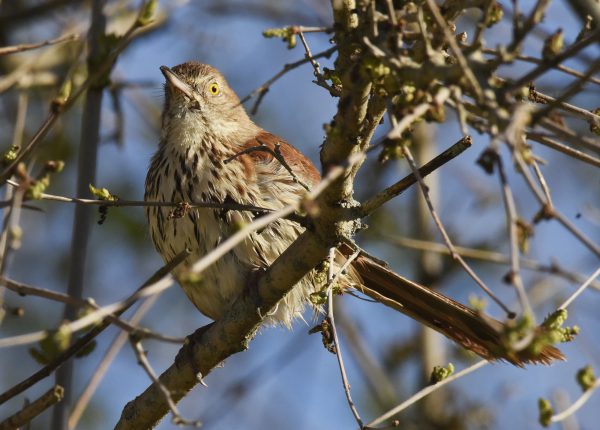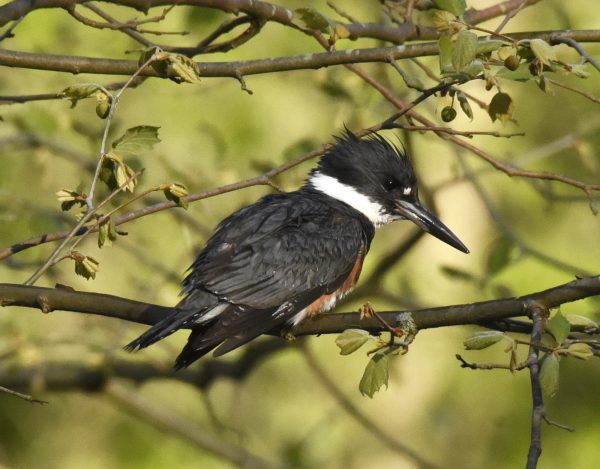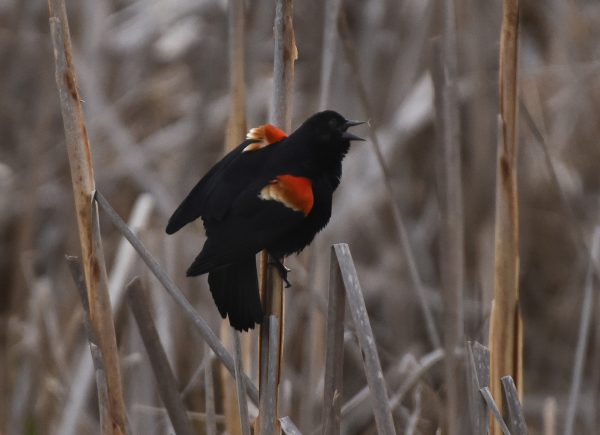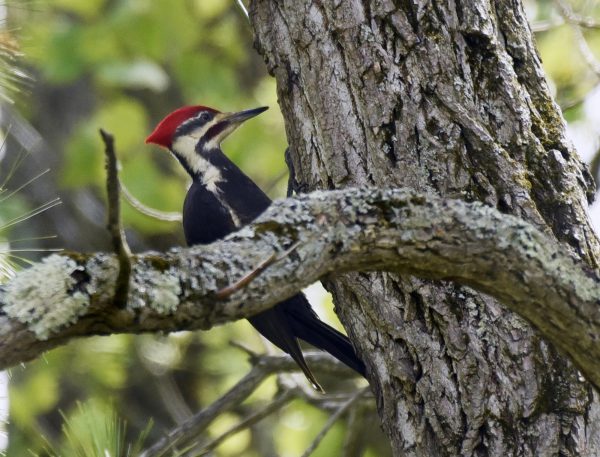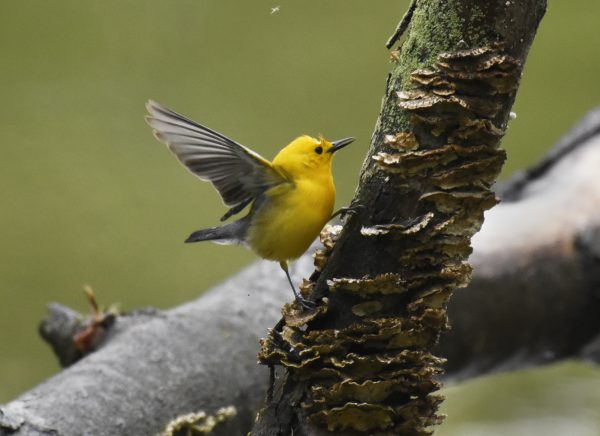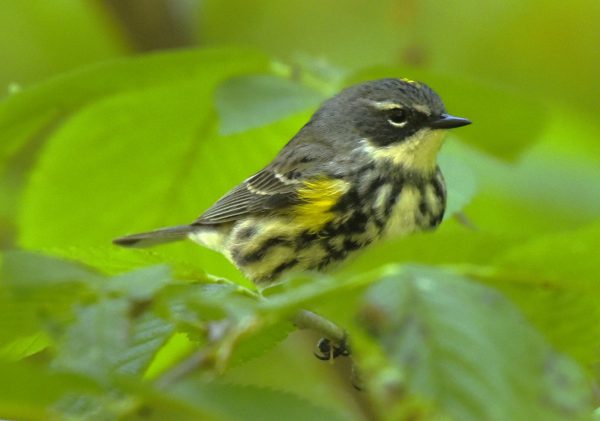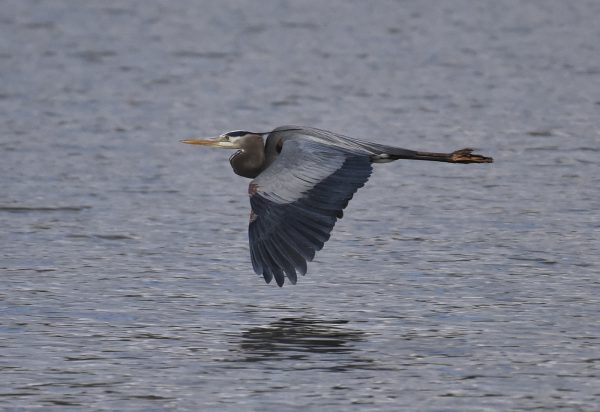Spring is in the air, and birds are everywhere! You don’t have to be a professional birdwatcher to enjoy birding. We've compiled a list of 10 species you can spot in Indiana and some tips on getting started with Indiana birdwatching. Can you find all 10?
Male Northern Cardinal - Indiana's State Bird (in Indiana's State Tree)
Where to start
Grab binoculars and see how many different birds you can find! Look up. Look in trees and bushes. Look along roadsides and streams.
Parks have lists of birds you might see throughout the year. Some nature centers have one-way bird windows. The Indiana Audubon Society and local birding groups offer field trips to various birding hotspots.
Birds are migratory. Some are just passing through. Some will stick around all summer. Look around whenever you’re outside. Make a trip to Indiana Department of Natural Resources properties or spots on the Indiana Birding Trail. Birds are all around.
How to know what you're looking at
A field guide or phone app will help you identify what you find as you’re exploring Indiana with your State Nature Passport. The Merlin Bird ID app (free) and others are great for identifying birds. You might even start a list of all the birds you see!
Look a little closer
A pair of 8x42 binoculars or a spotting scope give you a better view of what’s around you. For bird photography, a decent digital camera and a long telephoto lens upwards of 500 mm will do the trick.
Listen
Don’t forget to listen! You may hear birds before you see them. Try an app like BirdNET to identify bird songs (free).
Have fun and enjoy the beauty singing and swirling around you!
Female Northern Cardinal
The Northern Cardinal is a fairly large, long-tailed songbird with a short, very thick bill and a prominent crest. Cardinals often sit with a hunched-over posture and with the tail pointed straight down. Learn more.
Rose-breasted Grosbeak
Bursting with black, white, and rose-red, male Rose-breasted Grosbeaks are like an exclamation mark at your bird feeder or in your binoculars. Females and immatures are streaked brown and white with a bold face pattern and enormous bill. Learn more.
Brown Thrasher
It can be tricky to glimpse a Brown Thrasher in a tangled mass of shrubbery, and once you do you may wonder how such a boldly patterned, gangly bird could stay so hidden. Brown Thrashers wear a somewhat severe expression thanks to their heavy, slightly downcurved bill and staring yellow eyes, and they are the only thrasher species east of Texas. Brown Thrashers are exuberant singers, with one of the largest repertoires of any North American songbird. Learn more.
Kingfisher
Red-winged Blackbird
One of the most abundant birds across North America, and one of the most boldly colored, the Red-winged Blackbird is a familiar sight atop cattails, along soggy roadsides, and on telephone wires. Glossy-black males have scarlet-and-yellow shoulder patches they can puff up or hide depending on how confident they feel. Females are a subdued, streaky brown, almost like a large, dark sparrow. Their early and tumbling song are happy indications of the return of spring. Learn more.
Pileated Woodpecker
The Pileated Woodpecker is one of the biggest, most striking forest birds on the continent. It’s nearly the size of a crow, black with bold white stripes down the neck and a flaming-red crest. Look (and listen) for Pileated Woodpeckers whacking at dead trees and fallen logs in search of their main prey, carpenter ants, leaving unique rectangular holes in the wood. Learn more.
Prothonotary Warbler
The brilliant Prothonotary Warbler bounces along branches like a golden flashlight in the dim understory of swampy woodlands. This golden ray of light is unique among warblers with its beady black eye and blue-gray wings. It is also one of two warblers that build their nests in holes in standing dead trees. Learn more.
Yellow-rumped Warbler
Yellow-rumped Warblers are impressive in the sheer numbers with which they flood the continent each fall. Shrubs and trees fill with the streaky brown-and-yellow birds and their distinctive, sharp chips. Though the color palette is subdued all winter, you owe it to yourself to seek these birds out on their spring migration or on their breeding grounds. Spring molt brings a transformation, leaving them a dazzling mix of bright yellow, charcoal gray and black, and bold white. Learn more.
Great Blue Heron
Whether poised at a river bend or cruising the coastline with slow, deep wingbeats, the Great Blue Heron is a majestic sight. This stately heron with its subtle blue-gray plumage often stands motionless as it scans for prey or wades belly deep with long, deliberate steps. They may move slowly, but Great Blue Herons can strike like lightning to grab a fish or snap up a gopher. In flight, look for this widespread heron’s tucked-in neck and long legs trailing out behind. Learn more.
The Indiana Birding Trail is a great guide to finding the best spots for birding in Indiana. Learn more about the trail.
